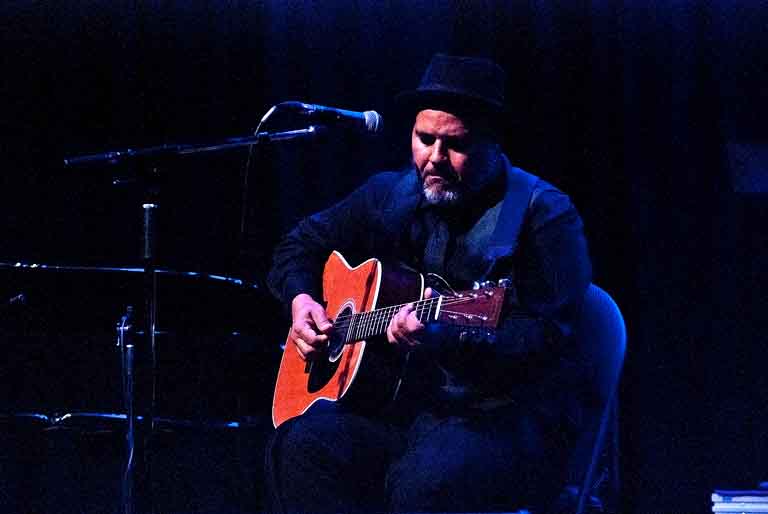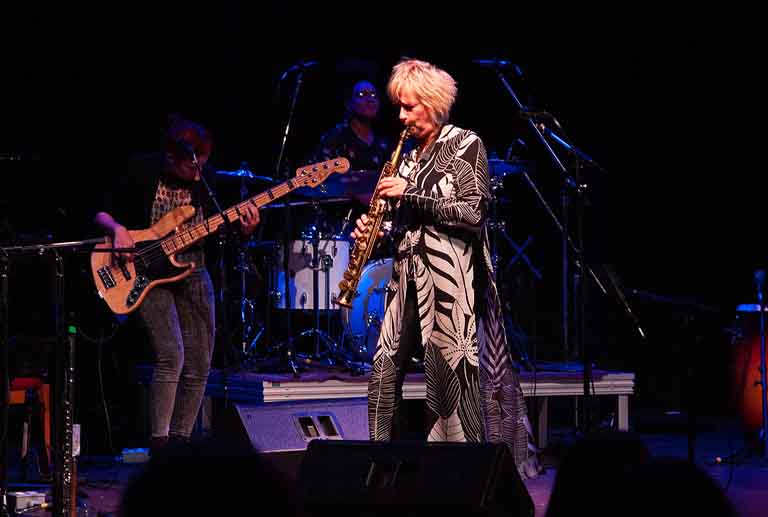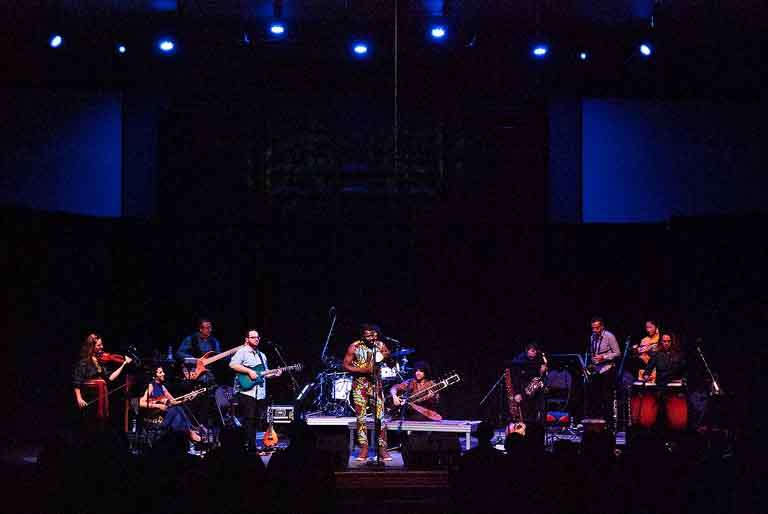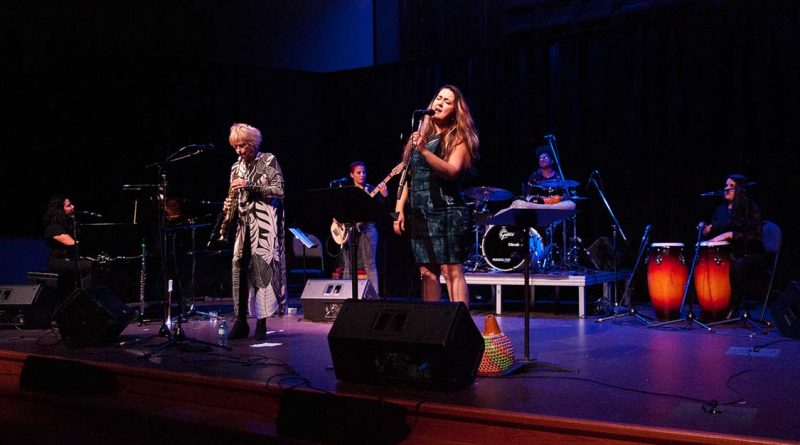Music Around The World
By John Swartz
What a weekend. The Orillia Centre for Art & Culture presented two concerts Friday and Saturday evenings at St. Paul’s Centre featuring the kind of music we don’t often get to hear. Jane Bunnett and Maqueque was the draw Friday and Kune Saturday.
However, first up was Brooke Blackburn. The elder brother of the band Blackburn appeared solo, but still threw in a few tunes first heard in Orillia a few years ago when the band played the Orillia Spring Blues Festival.

Almost every tune he sang traced back to some element of his family, whether it was about his parents, his brothers, even his grandfather. He used an acoustic guitar, which as a bluesman provided some great ear candy, yet not all the tunes had a blues sensibility.
Brooke’s next gig is as a member of the band for the Soulpepper Theatre Company’s revue, The Riverboat, which is about the earl days of the Riverboat Coffee House where Gord, Joni Mitchell, Murray McLauchlan, and Neil Young got their start.
That was it for Canadian, or North American, music for the balance because Bunnett surrounded herself with Cuban immigrants. Each member of the band is an A list musician. The first notice of the individual quality of chops the audience had came in the second tune when Dánae Olano laid down an extended piano solo that started out relatively stock, then ventured into a land of imagination not expected, and a level of technical proficiency that would make a number of relatively good piano players reconsider their own abilities.
The combo of Yissi Garcia on drums and MaryPaz Fernandez on congas and everything else you can hit was a joy to witness. Throughout the concert they played with an originality not often heard and both exhibited some of the best and smoothest drumming hands this writer has seen.
Most of the singing was handled by Melvis Santa and bassist Tailin Marrero Zamor, but all sang as an ensemble at times. Zamora’s early training was on guitar and that was reflected in her solos; bassists love to modulate all the scales they can with arpeggios and odd rhythms to show off their chops, but Zamora played with melodies instead. It was refreshing.

Bunnett’s sax and flute playing is unique. She’s in the same class as other great wind players for sure, and the songwriting she does gives her room to experiment. Sound wise they often have a Pat Metheny vibe, minus the guitar being the lead voice, mashed up with Weather Report, and rhythmic tapestry. Oh boy was it rhythmic.
Saturday night it was all Kune. With 11 musicians on stage, and you know each one of them is going to be featured, you need about two hours to do the run-through. Again rhythm brought it all together with three percussionists, wait make that 5 at times, or 11 when needed.
The instrumentation was varied with the standards you might expect, clarinet, sax, violin, drums congas, bass along with sitar, bamboo flute, tar, tama talking drums and ngoni. That’s the short list.

You might wonder how all those fit together at once and those who went to the concert would likely say very well. The sound of each member playing at the same time with familiar and weird sounds happening at once is different but not displeasing at all.
Finding a style to describe any one of the tunes is almost impossible. The opener sounded like an East Coast kitchen party tune, at first, then something you’d hear in a Turkish market, then sub-continental. The whole night was like that. The only thing tying it all together was beat. Even when it was hard to pick a time signature like when a rhythm in 4 is played over a 6/8, your feet can still keep time.
The whole night was energetic except for the tune featuring sitar (played by Anwar Khurshid). We all know it can sound twangy and sometimes the notes don’t exactly fit to the Western temperament, but he made it wound lush and smooth like a guitar, but with a different tonality.
On the whole both concerts were invigorating and stimulating to hear something so foreign yet accessible – especially for the musicians in the audience. And this is so Canadian when you think about it. With immigrants from all over the world making home here, we should expect the infusion of traditional instruments and styles to accentuate our music and in time become the norm. In time it could be the standard 4/4 music we get fed will just be a part of the mosaic of music we are used to hearing and moving to.
(Photos by Swartz – SUNonline/Orillia) Main – Jane Bunnett and Maqueque at St. Paul’s Centre.
![]()



![]()

